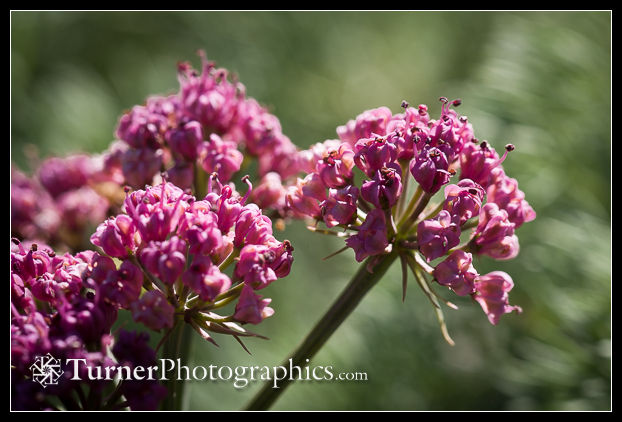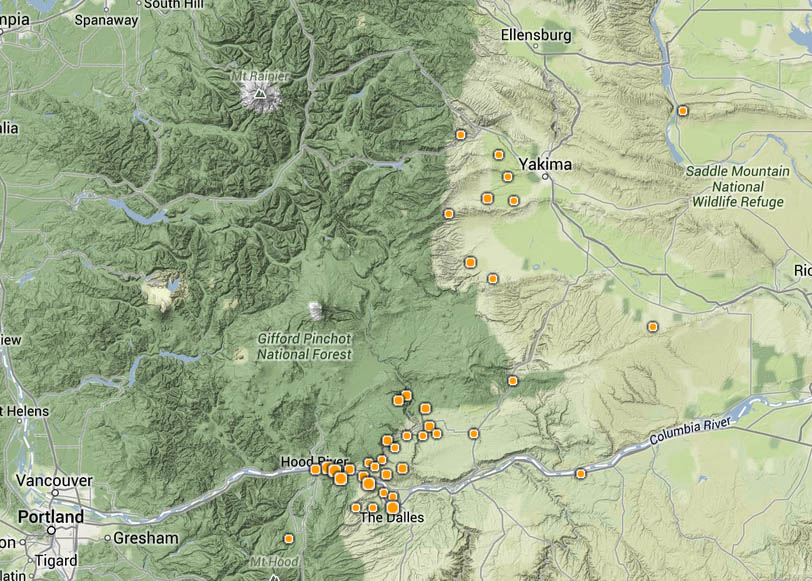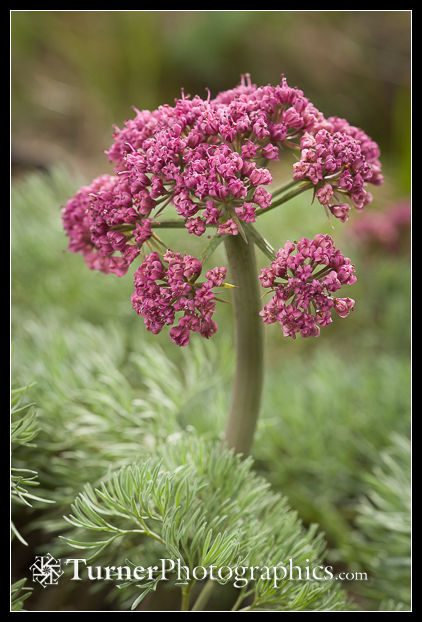In the Pink with Columbia Desert Parsley

Columbia Desert Parsley blossoms
Columbia Desert Parsley, Lomatium columbianum, blooms early in the Columbia Gorge. Today, the first day of spring, it was at “early peak” along Washington Rt. 14 between Bingen and Dallesport.
This is one of those plants that is very common in those places where it grows, yet it has a very limited distribution. It’s prolific on both sides of the Columbia River in the area I visited today, essentially at the mouth of the Klickitat River.

You’ll find scattered plants further upriver, and on the hills above tributaries in Yakima County. But this is the only place in the world this plant grows. The distribution map is from the Pacific Northwest Herbaria portal and shows where the species has been collected.
![Columbia Desert Parsley [Lomatium columbianum] under Garry Oaks [Quercus garryana]. Cherry Orchard Trail, Columbia Gorge NSA near Lyle, WA. © 2014 Mark Turner Columbia Desert Parsley](/wp-content/uploads/2014/03/Turner_WP9C7922.jpg)
Columbia Desert Parsley grows along the highway, sending its roots down through the rocky soil, sometimes in places where it seems there can’t be any soil at all. I also found it today a bit higher up, along the Cherry Orchard Trail, where it was growing among the Garry Oaks, Quercus garryana. It was scattered along the trail, usually in more open and rocky areas. When I reached the meadow on the plateau about 300 feet above the river there was no plants to be found.
![Columbia Desert Parsley [Lomatium columbianum] view east upstream on Columbia River. Cherry Orchard Trail, Columbia Gorge NSA near Lyle, WA. © 2014 Mark Turner Columbia Desert Parsley](/wp-content/uploads/2014/03/Turner_WP9C7980.jpg)
Near the bottom of the trail what appears to be an old road snakes along the cliff to a viewpoint over the river, highway, and BNSF railroad tracks. That’s where I found this beautiful specimen of my favorite plant of the day. Here it’s photographed with my 16mm super wide angle lens just a few inches from the blossoms.

Lomatium columbianum is a member of the carrot family. Each flower head, or umbel, contains many individual blossoms. Most members of the genus have yellow or white flowers. This is one of the few that are pink or purple, and it’s certainly one of the largest and showiest desert parsleys. When fully mature, the flower stems can be up to 3 feet tall and large plants can be a similar diameter. The foliage is a soft gray-green, pinnately divided multiple times and giving a somewhat feathery appearance to the plants.
If you’re traveling through the Columbia Gorge in the early spring, be sure to take a few minutes to stop and enjoy this narrow endemic plant.
You can find more photos of Columbia Desert Parsley, from previous visits to the Gorge, on my Pacific Northwest Wildflowers website.
In case you’re interested in the photographic details, I shot the close-up at the top of the post with a 100mm macro lens. I used the same glass for the individual umbel, shading the blossoms with a diffuser and reflecting a little sun back into the face of the flowers. The photo of the flowers under the oak trees was made with a 24mm tilt-shift lens and the view over the river with a 16-35mm lens at its widest setting. I made minor adjustments to all of them in Adobe Lightroom before uploading them to the blog.

